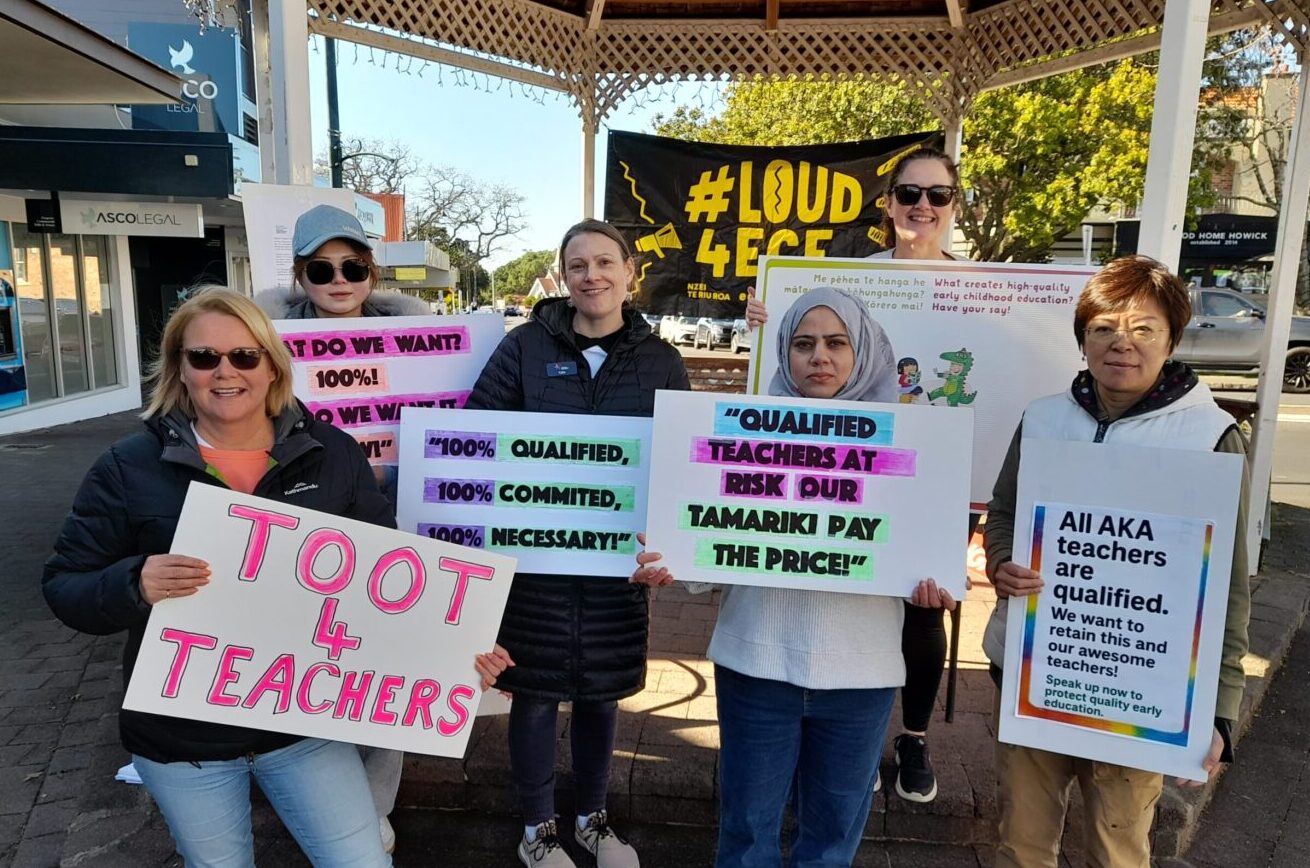
Advice from the Education Ministry to the Government suggests it’s more focused on assisting Early Childhood Education (ECE) providers cut costs rather than making sure young children get high-quality, safe accessible early learning, claims Te Rito Maioha Early Childhood New Zealand.
A ministry document called Options to reduce ECE service staffing costs aims to cut the most significant cost for providers: staff wages, says Early Childhood NZ.
An option recently implemented allows employers to pay new teachers the minimum starting rate, regardless of their qualifications or experience, it says.
“This advice confirms what we feared, that cost savings for providers are being prioritised over children’s learning and well-being,” says Kathy Wolfe, chief executive of Te Rito Maioha Early Childhood NZ.
“Reducing pay for qualified teachers not only undermines professional standards, but it also risks deterring future teachers from joining the sector.
“We were told their [the Government’s] goal was to lift education outcomes and that journey begins in early childhood.”
According to Wolfe, the ministry’s advice states that the cost-cutting measure is expected to save providers up to $22 million over two years.
It also acknowledges the serious risks associated with this approach, she says.
Last Saturday in Picton Street, Howick, east Auckland kindergarten teachers were protesting about the Government’s proposals.
Kate Dove, a teacher at Botany Downs Kindergarten, who was holding one of the placards, told the Times: “The quality of education provided, which is professional, consistent and delivered by degree-holding teachers, will undoubtably decline with the proposed level of teacher qualification.
“We feel the proposed funding and policy changes are potentially disastrous to the proud history of kindergartens and our known reputation for quality education.
“Each of my 100 per cent qualified colleagues is passionate about delivering the best quality education to our families’ tamariki each day and believe that it’s their right to receive it.
“With reduced funding and less qualified teachers this will all change,” says Dove.
Montessori Aotearoa NZ chief executive Cathy Wilson says: “The ministry’s own words say it all, this move makes ECE teaching ‘less attractive for those considering studying and entering the workforce’.
“We’re already in a teacher workforce shortage and need to attract more teachers and retain a higher number of teachers.
“How can we expect to maintain a high-quality system when we devalue the people who deliver it?” asks Wilson.
“This short-term thinking will only create bigger problems, with fewer qualified teachers, more instability in the workforce, and a greater risk to children’s safety and well-being.
“How does that help prepare tamariki for school?”
Early Childhood NZ believes that “even more concerning is the Government’s apparent intention to abandon the pay parity scheme”.
“This initiative links the pay of ECE teachers in education and care centres to that of kindergarten teachers, who are funded directly by the Government and have pay parity with primary teachers.
“The system was designed to ensure fairness across the teaching profession, recognising experience and qualifications whether a teacher is in ECE, primary, or secondary education.”
Wilson says: “Teachers are teachers, whether they’re working with infants, children, or teenagers.
“Undermining the pay and conditions of ECE teachers sends a clear message that their work is valued less.
“That’s not only short-sighted, but it’s also damaging for teachers, tamariki, and whānau alike.”
Early Childhood NZ says: “The implications are serious. In wealthier communities, providers may simply pass increased costs on to parents who can pay.
“In lower-income communities, however, providers will be more likely to cut wages, reduce qualified staff, or take advantage of any future changes that lower the minimum qualification requirements, effectively creating a two-tier ECE system.”
Wolfe says: “We’re staring down the barrel of deepening inequity in early childhood education.
“If qualification requirements are relaxed and pay is suppressed, the quality of teaching in some demographic areas will decline, and with it, outcomes for tamariki.
“This direction will increase teacher turnover, shrink the future workforce, and accelerate the decline of New Zealand’s globally recognised high-quality ECE.”
The Government announced a review of ECE funding in June and that work continues.
“The funding review is underway. However, it already seems to have been undermined,” Wolfe says.
“We urge the Government to properly fund ECE, not by slashing teacher pay or lowering standards, but recognising the vital role teachers play and committing to equity and excellence for every child.”
Dove says local east Auckland kindergartens have a collective petition to sign for people agreeing with its statement.
“We feel that it’s the parents right to know how government’s policy could affect their child’s well-being and the kindergarten environment.”
On July 31, Associate Education Minister David Seymour announced new legislation to set out the purpose of regulating ECE and that the Education Review Office will be in charge, instead of the Education Ministry.
“The [Early Childhood Education Reform] Bill will increase clarity and certainty,” he said.
“It will ensure the sector and parents know their rights when being regulated, and that the regulator knows its purpose when making regulations.
“The new law’s first priority is child safety. It will also ensure that regulators should only put costs on parents if they’re necessary to achieve the goal.
“Critically, the purpose of regulating will be set out in law, as recommended by the Ministry for Regulation’s ECE Sector Review.
“Too many ECE providers are bogged down by confusing, overlapping rules and having to deal with too many government agencies,” Seymour said.
“We’re changing that, so providers can spend less time on paperwork and more time looking after children.
“The Ministry for Regulation went straight to the source and asked the sector what’s increasing costs and limiting competition.
“These changes are based on feedback from providers around the country who say they’ve been frustrated by unclear rules, conflicting advice from different agencies, and unnecessary red tape,” said Seymour.
“Some centres told us they were being told one thing by one agency, and the opposite by another. That kind of confusion costs time and money and drives up costs for parents.”








